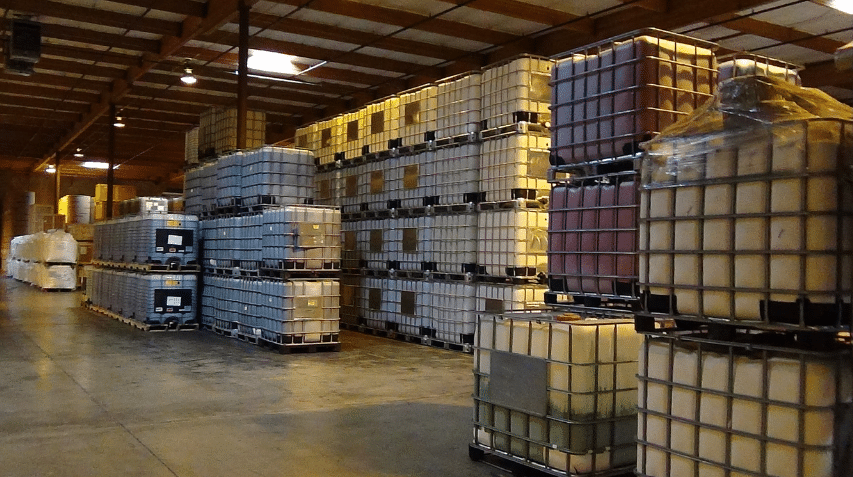The Role and Importance of Warehouses in Modern Business

Warehouses, often considered the backbone of the supply chain, play a vital role in ensuring the smooth flow of goods from manufacturers to consumers. In an era of rapid technological advancements and the thriving e-commerce landscape, the importance of Warehouse in Leicester has reached new heights. Let’s delve into the evolution, functions, challenges, and future prospects of warehouses in today’s business landscape.
Evolution of Warehouses
Warehousing, as a concept, has evolved significantly over time. From simple storage spaces to technologically advanced logistics hubs, warehouses have adapted to meet the changing demands of commerce. Early warehouses were primarily used for storing goods, and safeguarding them from external elements. However, with the rise of global trade and industrialization, warehouses transformed into centers of consolidation and sorting, streamlining the distribution process.
Functions of Warehouses
Warehouses serve multiple functions within the supply chain. Their primary role is storage, providing a safe environment for goods until they are needed in the market. Beyond storage, warehouses facilitate the consolidation of products from different sources, allowing for more efficient transportation. Sorting within warehouses ensures that orders are prepared accurately and can be dispatched promptly.
Efficient inventory management is a critical function of Warehouse in Northampton. In a world where stockouts can lead to lost sales and overstock situations can tie up capital, warehouses help strike the right balance through strategic inventory control.
Types of Warehouses
Warehouses come in various types, each catering to specific needs. Private warehouses are owned by manufacturers or retailers to store their own products. Public warehouses, on the other hand, offer storage and related services to multiple businesses. Bonded warehouses are supervised by customs authorities and are used for storing imported goods until customs duties are paid.
The rise of e-commerce has led to the emergence of fulfillment centers, strategically located near urban areas to facilitate rapid order processing and delivery. Cold storage warehouses, equipped with controlled temperature environments, are essential for storing perishable goods like food and pharmaceuticals.
Location and Design Considerations
Warehouse location plays a pivotal role in the efficiency of supply chain operations. Factors such as proximity to suppliers, consumers, and transportation hubs influence this decision. A well-chosen location can significantly reduce transportation costs and lead time.
Equally important is the design of the warehouse itself. A well-organized layout optimizes space utilization, reduces the distance traveled by goods within the warehouse, and minimizes handling costs. The adoption of technology, such as conveyor systems and automated storage and retrieval systems (AS/RS), further enhances these benefits.
Warehouse Management Systems (WMS)
Modern warehouses rely heavily on technology for effective management. Warehouse Management Systems (WMS) are software applications that handle various Warehouse in Derby operations, including inventory tracking, order processing, and labor management. WMS provides real-time visibility into inventory levels, improving accuracy and enabling efficient order fulfillment.
Inventory Control and Optimization
Effective inventory management is a complex task. ABC analysis categorizes items based on their value and significance, allowing businesses to focus resources where they matter most. Just-In-Time (JIT) inventory principles help minimize carrying costs by ensuring that goods arrive precisely when needed.
Warehouses contribute to achieving the delicate balance between avoiding stockouts that disappoint customers and minimizing overstock situations that tie up capital. They act as buffers against demand variability.
Labor and Automation
The interplay between human labor and automation is a defining feature of modern warehouses. While human workers provide flexibility and adaptability, automation offers precision and speed. Robotics and Artificial Intelligence (AI) have revolutionized warehouses, with robots handling tasks such as picking, packing, and even autonomous forklift operation.
Sustainability in Warehousing
The drive for sustainability has extended to the warehousing sector. Green warehouses employ eco-friendly practices to reduce their environmental footprint. This includes energy-efficient designs, use of renewable energy sources, and minimizing waste generation. Sustainability not only benefits the environment but also contributes to cost savings and enhanced brand reputation.
Challenges Faced by Warehouses
Warehouses face several challenges in their operations. Demand volatility and seasonality can lead to fluctuating inventory levels, making accurate forecasting essential. Workforce management is another challenge, especially during peak seasons.
Reverse logistics, involving the return of goods from consumers to the manufacturer or retailer, presents its own set of complexities. Managing returned products efficiently and refurbishing them for resale requires careful planning.
Future Trends in Warehousing
The future of warehousing is shaped by technology and innovation. Advancements in robotics, AI, and the Internet of Things (IoT) will continue to redefine warehouse operations. Predictive analytics will enable better demand forecasting, reducing the risk of stockouts. Blockchain technology is also being explored for enhancing transparency and security within the supply chain.
Importance of Warehouses in Global Trade
Warehouses play a crucial role in global trade by facilitating the movement of goods across borders. They complement the operations of ports and transportation networks, ensuring the timely distribution of products to local markets. Efficient warehouses reduce congestion at ports and contribute to smoother customs processes.
Conclusion
In conclusion, warehouses are the unsung heroes of modern business. They have evolved from mere storage spaces to dynamic centers of logistics and technology. Their functions encompass storage, consolidation, sorting, and efficient inventory management. The challenges they face, such as demand volatility and workforce management, are met with innovative solutions, including automation and sustainable practices. As technology continues to shape the future of warehousing, these essential hubs will remain at the heart of global commerce.
